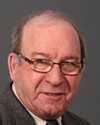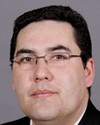Bonjour, good morning, and weyt-k. It's good to be invited. Thank you for the invitation to appear before this committee, which seems to be influential over the lives of first nations people, and in this case particularly over education.
I should take a time check. It's 10 minutes?
I'm a Secwepemc, a Shuswap person from B.C. I live not too far from Colin in the North Thompson, north of Kamloops, in a community, on a reserve, the Simpcw First Nation. I was born and raised there. I have a background in education. I've been a residential school administrator, a band planner, a principal of a first nations school, and I have extensive experience just dealing with committee work over the last 20 years with regard to first nations education from early childhood to post-secondary. Currently, I am adviser to the First Nations Leadership Council in B.C., as well as the First Nations Education Steering Committee and the First Nations Schools Association in British Columbia.
With that, I think the discussion around post-secondary education is always timely; it's always been there for the last number of years. The expectation that first nations lives can be improved by participation in education I think is very true--I believe that, and I think we all do. But we have always been challenged, in the last couple of generations anyway, over the last hundred years, in gaining the benefit of an education that will allow us to succeed in a contemporary world, and not only to succeed in the contemporary world but to do it from the unique perspective of first nations people in terms of maintaining our language and culture as part of that success overall.
So the experience I have had is I think similar to the experiences of many other first nations people. I'm in my mid-fifties, and neither of my parents had any post-secondary education; they went to a residential school, they both went and completed that. In that institution you completed at grade 8 with absolutely no expectation of going on to take advantage of the benefits of a post-secondary education, to get into the professions and into business and that sort of thing. That was not the purpose of those institutions. The other negative aspect of the institutions is well-documented as well, the negative impact in terms of culture and language and that sort of thing.
Neither of my parents went to post-secondary education, and they had no expectation of going to any post-secondary education experience, and neither was there any support, either from their homes or from government.
I think to some extent we're still living the hangover from that experience. The expectations are still low, most of the kids don't expect to go on to post-secondary education, and there's a lack of significant support along the way, from the communities, the parents, and in the government's role in financial support, through policy and allocations of resources for post-secondary education.
Like Mary, I think a good education has a firm foundation in early childhood, in the K to 12 area. We simply don't have enough first nations learners who are succeeding in the K to 12 area to really close the gap significantly. If all of our kids graduated from grade 12 in the next number of years, we still wouldn't be closing the gap. There are very large numbers of first nations learners who simply do not have the benefits of a good quality grade 12 graduation certificate. Many of our students are graduating from grade 12, but without significant or appropriate credentials in terms of course work to go on into the post-secondary education program of their choice.
There's a huge pool of first nations learners out there who still need the benefit of a grade 12 education. So it's not simply post-secondary education that we have to deal with. We have to deal with early childhood education and K to 12. But the academics are a real challenge--the foundations that lead to success in post-secondary education. We're being challenged in that way. We're simply not getting the appropriate academic success to lead us to be successful in post-secondary areas.
We don't have many role models yet within our communities. I don't believe a lot of our children are being positively counselled and have career plans that clearly lead to post-secondary education. So those areas are really important to deal with.
Staying with the K to 12, we're still challenged in our first nations schools with having the appropriate support, particularly funding for the schools themselves, the schooling, and the systems for first nations learning in our communities.
A challenge is that entrance requirements for universities are rising. It's not just, “get a grade 12 certificate and you can get into university”. Many universities don't accept just any graduates. They have levels of entrance requirements that are quite a bit higher than just having a certificate. You have to graduate with a certain grade-point average before you can even be let in the door. So we require not just success but strong success at the grade 12 level to get into post-secondary education.
We have a large pool of first nations learners who don't have grade 12 or don't have sufficient credentials to get into post-secondary programs. We have a university-college education program to provide support for students going into post-secondary education, but that's just a one-year program. I believe we need more than just one year to support learners bridging their secondary experience with the requirements for entry into post-secondary education.
A very large issue that continues to come back to first nations is that neither Indian and Northern Affairs nor the federal government really takes responsibility for providing adequate resourcing for post-secondary education. It's not a firm mandate through legislation. The Indian Act is interpreted such that post-secondary education assistance is just a matter of policy. Down the road, first nations believe that the federal government might just set it aside and there won't be any support.
Costs are a real factor. Tuition allowances are limited, and the cost of tuition has been sky-rocketing in the last number of years. I think you're all aware of that from the stats. That is really a significant issue, as well as the cost of living. I know that support is pegged to the student loans program, but for first nations learners coming from remote rural areas, costs can be very significant.
Do I have more time?





